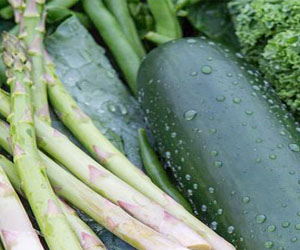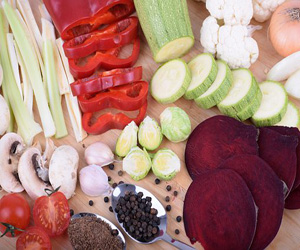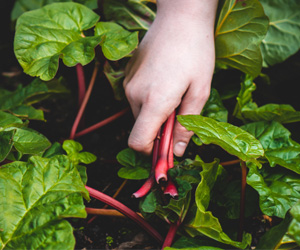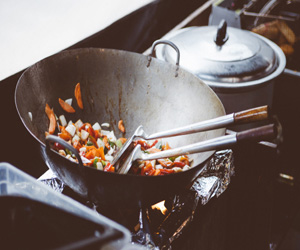


A Marvel Of Precision And Craftsmanship

In the world of coffee, the espresso machine is the unsung hero that transforms humble coffee beans into the liquid gold known as espresso. This intricate device is not merely a kitchen appliance; it's a masterpiece of engineering, precision, and craftsmanship. Behind every exquisite espresso shot lies the dedication and ingenuity of the espresso machine.
A Brief History
The history of the espresso machine is a testament to human innovation. The first patent for a steam-driven coffee machine was granted to Angelo Moriondo in 1884, in Turin, Italy. This early device laid the foundation for what would become a global coffee revolution.
In 1901, Luigi Bezzera created the first true espresso machine by incorporating a pressure release valve. This innovation allowed for the creation of highly concentrated coffee, which became known as "espresso" due to the speed at which it was brewed.
The Elements Of An Espresso Machine
Espresso machines are a complex amalgamation of components, each with a unique role in creating the perfect shot of espresso:
Boiler: The heart of the machine, the boiler heats water to the ideal brewing temperature, typically between 195°F and 205°F (90°C to 96°C). It is equipped with a pressure release valve to maintain precise pressure levels.
Pump: Modern espresso machines often feature a pump to ensure a consistent and controlled flow of water through the coffee grounds. The pump generates pressure, which is vital for creating the crema—a signature layer of golden froth on top of the espresso.
Portafilter: The portafilter is the device used to hold the coffee grounds during brewing. It is an essential tool in distributing the grounds evenly and consistently, contributing to the even extraction of flavors.
Group Head: The group head is the component that connects the portafilter to the machine. It plays a crucial role in maintaining a stable temperature and pressure during the brewing process.
Steam Wand: Espresso machines often come equipped with a steam wand, used to froth milk for various espresso-based drinks like cappuccinos and lattes. The wand controls the release of steam to achieve the desired level of froth.
The Art Of Espresso Extraction
Brewing a perfect shot of espresso is an art that demands precise execution. Baristas and enthusiasts alike know that achieving the correct grind size, dose, and tamping pressure is essential. The interaction between these elements and the machine's ability to maintain consistent temperature and pressure is what differentiates a mediocre shot from an extraordinary one.
Evolution And Innovation
Over the years, espresso machines have evolved significantly. From manual lever machines to semi-automatic, automatic, and super-automatic models, there's an espresso machine for every skill level and preference. Super-automatic machines, for example, take care of everything from grinding and dosing to brewing and milk frothing, making the process accessible to even the most novice coffee lovers.
Espresso machines have also become more compact and stylish, making them suitable for home use. From sleek, minimalist designs to vintage-inspired models, they add an aesthetic touch to modern kitchens.
The espresso machine is a true marvel of engineering and craftsmanship. It's a testament to human ingenuity, bringing the complex art of espresso brewing into the reach of countless coffee enthusiasts. Whether you're a professional barista crafting intricate latte art or a homebrewing aficionado perfecting your morning ritual, the espresso machine is the cornerstone of your coffee journey. It embodies the fusion of technology and tradition, offering a glimpse into the rich and ever-evolving world of coffee culture.






A Journey Through The World Of Fine Brews
 2. The Art Of Roasting: Understanding the roasting process is central to coffee connoisseurship. The connoisseur seeks to identify roast levels, discovering the subtle differences between light, medium, and dark roasts, and the effects on flavor and aroma.
2. The Art Of Roasting: Understanding the roasting process is central to coffee connoisseurship. The connoisseur seeks to identify roast levels, discovering the subtle differences between light, medium, and dark roasts, and the effects on flavor and aroma.
3. Brewing Mastery: A connoisseur becomes well-versed in brewing methods, experimenting with techniques like pour-over, French press, AeroPress, espresso, and cold brew. They perfect their brewing skills to unlock the full potential of each coffee bean.
4. Exploration Of Coffee Cultures: Coffee connoisseurs often delve into the coffee cultures of different regions. They explore the traditions and rituals associated with coffee, from the espresso bars of Italy to the coffee ceremonies in Ethiopia.
A Recipe For Health And Convenience
 Meal planning is a culinary skill that has grown in importance over the years, offering numerous benefits for individuals and families. It involves preparing a strategy for what to eat, how to shop, and how to prepare your meals in advance. This proactive approach to food management not only makes life easier but also has profound implications for health, nutrition, and overall well-being.
Meal planning is a culinary skill that has grown in importance over the years, offering numerous benefits for individuals and families. It involves preparing a strategy for what to eat, how to shop, and how to prepare your meals in advance. This proactive approach to food management not only makes life easier but also has profound implications for health, nutrition, and overall well-being.
The Basics Of Meal Planning
Meal planning is a systematic approach to deciding what to eat and when. It typically involves:
Menu Creation: You select the dishes and recipes you'd like to prepare for a set period, whether it's for a week, two weeks, or a month.
Ingredient List: Once your menu is set, you compile a list of all the ingredients you'll need for those meals.
Harnessing The Potential Of A Plant-Based Lifestyle
 Sustainability And Environmental Impact
Sustainability And Environmental Impact
The environmental benefits of a plant-powered lifestyle are substantial. Animal agriculture is a significant contributor to greenhouse gas emissions, deforestation, and excessive water consumption. By reducing the demand for meat and dairy products, plant-powered individuals contribute to a more sustainable planet. This lifestyle choice conserves resources, reduces carbon footprints, and helps protect the world's ecosystems.
Ethical Considerations
For many, the decision to be plant-powered aligns with ethical values. Concerns about animal welfare and the ethical implications of consuming animal products have led to a growing movement in favor of plant-based living. By adopting a plant-powered lifestyle, individuals take a stand against the practices associated with factory farming, promoting more humane and compassionate treatment of animals.
Plant-Powered Culinary Creativity
Plant-powered living is far from bland or restrictive. It opens the door to a world of culinary creativity and diversity. Plant-based cooking invites you to explore a wealth of flavors, textures, and cuisines. From hearty vegetable stews to innovative meat alternatives like plant-based burgers and sausages, the options are diverse, flavorful, and enticing.
Elevating Your Culinary Experience
 Time Efficiency: One of the most significant benefits of simplified cooking is the time it saves. By using shortcuts, pre-prepped ingredients, and easy-to-follow recipes, you can have a tasty meal on the table in no time. This is particularly valuable for busy individuals and families with packed schedules.
Time Efficiency: One of the most significant benefits of simplified cooking is the time it saves. By using shortcuts, pre-prepped ingredients, and easy-to-follow recipes, you can have a tasty meal on the table in no time. This is particularly valuable for busy individuals and families with packed schedules.
Minimal Ingredients: Simplified cooking often relies on a shorter list of ingredients. You don't need a pantry full of exotic spices and specialty items. Instead, you can create flavorful dishes with basic staples, reducing both cost and clutter in your kitchen.
Easy Cleanup: With fewer pots, pans, and utensils involved, cleanup becomes a breeze. Many simplified recipes are designed for one-pot cooking, reducing the time spent on dishwashing and kitchen tidying.
Versatility: Simplified cooking doesn't mean boring or repetitive meals. With some creativity, you can adapt simple recipes to your tastes by adding or substituting ingredients.
The Key To Stress-Free Cooking
 Why does kitchen efficiency matter? In a nutshell, it's the difference between an enjoyable cooking experience and a stressful chore.
Why does kitchen efficiency matter? In a nutshell, it's the difference between an enjoyable cooking experience and a stressful chore.
Here are a few reasons why it's worth investing in kitchen efficiency:
1. Time-Saving: In our busy lives, time is a precious commodity. An efficient kitchen allows you to prepare meals more quickly, leaving you with more time for other important aspects of your life.
2. Reduces Stress: A cluttered, disorganized kitchen can add unnecessary stress to your meal preparation. Efficiency streamlines the process, so you can enjoy cooking without frustration.
3. Promotes Healthy Eating: When your kitchen is well-organized, you're more likely to make nutritious choices. Access to fresh ingredients and efficient tools can lead to better meal planning.
A Culinary Journey Of Sensory Delights
 The Appeal Of Flavorful Feasts
The Appeal Of Flavorful Feasts
Why are flavorful feasts so appealing? Here are some compelling reasons:
1. Celebration: Flavorful feasts are often associated with special occasions, holidays, and gatherings. They serve as a way to commemorate and celebrate the moments that matter most.
2. Variety: These feasts offer a diverse selection of dishes that cater to different palates. From savory to sweet, from mild to spicy, there's something for everyone to enjoy.
3. Connection: Preparing and sharing a flavorful feast can strengthen bonds and create a sense of connection. It's a communal experience that fosters togetherness.
4. Sensory Delights: The combination of flavors, aromas, and textures in a flavorful feast creates a sensory adventure. It's a delightful exploration of the culinary world.
5. Tradition: Many flavorful feasts are rooted in tradition, carrying the legacy of generations. They provide an opportunity to pass down family recipes and customs.
The Art Of Crafting Flavorful Feasts
Creating a flavorful feast is an art that requires thought, care, and attention to detail. Here are some tips for crafting a memorable and delicious feast:
1. Plan Ahead: Start planning your feast well in advance. Consider the number of guests, dietary restrictions, and the dishes you'd like to feature.